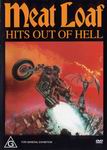
This review is sponsored by

This review is sponsored by
 |
|
|
|
|
|
||
| Category | Music | Biography - Cast
Discography |
|
| Rating | |||
| Year Released | 1991 | ||
| Running Time | 57:23 minutes | ||
| RSDL/Flipper | No/No |
|
|
| Start Up | Menu | ||
| Region | 1,2,3,4,5,6 | Director | |
|
Distributor |
Sony Music |
Starring | Marvin Lee Aday |
| Case | Black Brackley | ||
| RPI | $34.95 | Music | Marvin Lee Aday |
|
|
|
||
| Pan & Scan/Full Frame | Full Frame | English (Linear PCM 48/16 2.0, 1536
Kb/s)
English (Dolby Digital 5.1, 448 Kb/s) |
|
| Widescreen Aspect Ratio | None | ||
| 16x9 Enhancement | No | ||
| Theatrical Aspect Ratio | 1.33:1 |
|
|
| Macrovision | ? | Smoking | No |
| Subtitles | English | Annoying Product Placement | No |
| Action In or After Credits | No | ||
The songs on offer on is DVD are:
Whilst this would normally have been a most welcome addition to the collection, the lack of updating of the ten year old video, coupled with the relatively poor quality transfer, means that this is a severe disappointment in every respect. Ten songs is hardly good value for money on DVD.
This looks for all the world like the video tape that I used to own (it died many years ago) if I recall correctly. It really is not a great example of the superiority of DVD at all. Whilst much of this could be attributed to the age of the material, there is no denying that in general this is a somewhat diffuse looking effort that is not exactly blessed with copious amounts of detail. Indeed, there is nothing here that you will mistake for great definition, except perhaps in the slightly more recent If You Really Want To and Razor's Edge. Clarity is nothing especially memorable and the whole transfer is blessed with a degree of grain throughout. It should be remembered that a lot of this will be inherent in the source material, and thus was expected. Shadow detail is nothing special either. There did not appear to be any low level noise problems in the transfer.
The colour palette also demonstrates the age of the source material, lacking an awful lot in saturation. There is no vibrancy whatsoever here and the whole thing has a somewhat flat look in the colours - made worse by the obligatory problems presented by stage lighting. This tends to result in washed-out looks, although the red stage lighting does on occasion increase the appearance of oversaturation in the transfer. There is the odd indication of colour bleed in the transfer, most notably Meat Loaf's tie in Razor's Edge. There really is nothing here that really looks at all natural.
There did not appear to be any significant MPEG artefacts
in the transfer. There are no readily apparent film-to-video artefacts
in the transfer. Just about every individual video is blessed with a range
of film artefacts, mainly in the form of rather noticeable dirt marks.
| Sharpness | |
| Shadow Detail | |
| Colour | |
| Grain | |
| Film-to-Video Artefacts | |
| Film Artefacts | |
| Overall |
The music comes up reasonably well in the transfer and is fairly clear. There are just a few hints of audio sync here and there but they are more than likely inherent problems in the source material than mastering issues.
The Dolby Digital 5.1 soundtrack is a rather mundane sounding effort, as well as slightly inconsistent. For starters, it sounds less like a 5.1 effort and more like a 3.1 effort at best! There is little if anything being pushed through the rear channels, with only a little more coming through the front surrounds. The soundtrack really sounds at times as if it is coming generally from the centre channel, with the bass channel tossing in some support. That support however varies from being generally minor to the odd track having a bit more contribution. Unfortunately, Razor's Edge in particular suffers from too much bass and sounds just a little unnatural as a result - and vastly different from most of the rest of the DVD. More Than You Deserve suffers a little from distortion towards the end of the song, but that is the only evidence of any inherent problems in the source material. Overall, this is not a stellar example of 5.1 remastering at all and lacks a fair degree in clarity and presence.
The Linear PCM 2.0 soundtrack is also a pretty ordinary
sounding effort, with a degree of congestion throughout the sampled bits.
This is one of the poorest examples of the uncompressed Linear PCM sound
that I have yet heard. It lacks any sort of real clarity in the sound,
lacking the air that this sound is usually associated with. This is not
in the same league as a CD recording, to which these soundtracks can normally
be compared, and is just a tad difficult to enjoy.
| Dialogue | |
| Audio Sync | |
| Clicks/Pops/Dropouts | |
| Surround Channel Use | |
| Subwoofer | |
| Overall |
| Video | |
| Audio | |
| Extras | |
| Plot | |
| Overall |
© Ian Morris (have
a laugh, check out the bio)
14th June, 2001.
|
|
|
| DVD | Pioneer DV-515; S-video output |
| Display | Sony Trinitron Wega 80cm. Calibrated with the NTSC DVD version of Video Essentials. |
| Audio Decoder | Built in |
| Amplification | Yamaha RXV-795. Calibrated with the NTSC DVD version of Video Essentials. |
| Speakers | Energy Speakers: centre EXLC; left and right C-2; rears EXLR; and subwoofer ES-12XL |